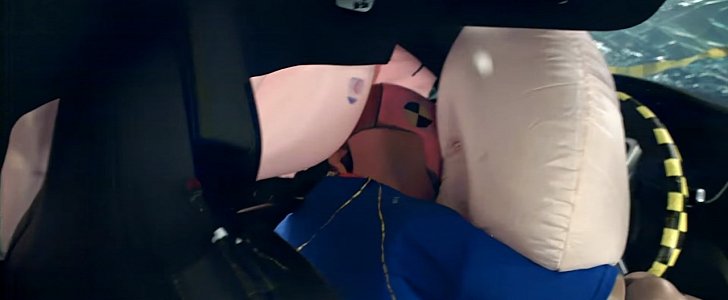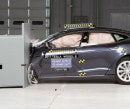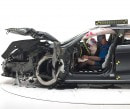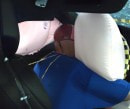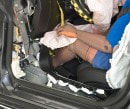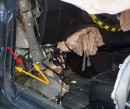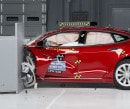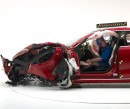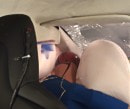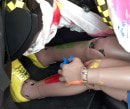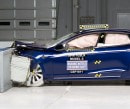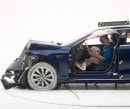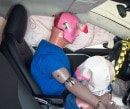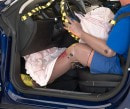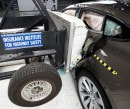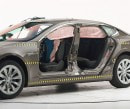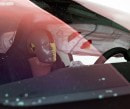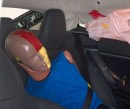You often hear that the Model S is possibly the safest of all full-size sedans currently in production. Well, that may not be the case according to the Insurance Institute for Highway Safety. Bottom line is, the archetypal Tesla missed out on the IIHS’ top Top Safety Pick+ rating.
For the institute’s latest round of crash tests, six large sedans have been put through their paces. Of these, only three (Toyota Avalon, Lincoln Continental, Mercedes-Benz E-Class) earned the coveted TSP+, whereas the remaining cars settled for Top Safety Pick without the + suffix.
"This group of large cars includes some with stellar ratings,” explains says David Zuby, IIHS executive vice president and chief research officer, “but our small overlap front test remains a hurdle for some vehicles.” In the case of the Tesla Model S, Chevrolet Impala, and Ford Taurus, the respective manufacturers can do a better job at making their vehicles safer.
Even though Tesla improved the safety belt design in the Model S for vehicles built after January 2017, the problem remains the same. More to the point, the dummy’s torso moves too far forward in this crash scenario, a condition that allows the head to strike the steering wheel hard through the airbag. That, as expected, is a definite no-no. But wait, there’s more!
The Insurance Institute for Highway Safety further notes that maximum intrusion into the driver’s space stands at 11 inches in the lower part of the cabin. The structure’s tendency to deform and sub-standard safety belt design, therefore, have dragged the Model S down in the eyes of the IIHS.
Experts from the institute further tested headlight performance for both the standard LED reflectors and the curve-adapting units. And like many modern cars, the Model S does not impress. In fact, both varieties have been deemed “poor” because of some glare from the low beams and inadequate visibility in all four curve tests. All in all, there’s room for improvement for the Model S.
On a slight tangent, did you know the Chevy Bolt is a TSP+?
"This group of large cars includes some with stellar ratings,” explains says David Zuby, IIHS executive vice president and chief research officer, “but our small overlap front test remains a hurdle for some vehicles.” In the case of the Tesla Model S, Chevrolet Impala, and Ford Taurus, the respective manufacturers can do a better job at making their vehicles safer.
Even though Tesla improved the safety belt design in the Model S for vehicles built after January 2017, the problem remains the same. More to the point, the dummy’s torso moves too far forward in this crash scenario, a condition that allows the head to strike the steering wheel hard through the airbag. That, as expected, is a definite no-no. But wait, there’s more!
The Insurance Institute for Highway Safety further notes that maximum intrusion into the driver’s space stands at 11 inches in the lower part of the cabin. The structure’s tendency to deform and sub-standard safety belt design, therefore, have dragged the Model S down in the eyes of the IIHS.
Experts from the institute further tested headlight performance for both the standard LED reflectors and the curve-adapting units. And like many modern cars, the Model S does not impress. In fact, both varieties have been deemed “poor” because of some glare from the low beams and inadequate visibility in all four curve tests. All in all, there’s room for improvement for the Model S.
On a slight tangent, did you know the Chevy Bolt is a TSP+?
